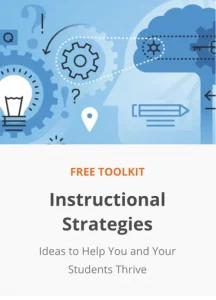You know that different people learn best in different ways, but when you’re designing an online course it could be difficult to accommodate them all. Today there are countless software solutions to communicate over video calls or VoIP telephone, but few are designed specifically with teaching in mind. If you are wondering what VoIP phones are, they are an internet-based telephone service that can connect to your normal service using a VoIP phone adapter.
 If you want to fully accommodate everyone, you’ll have to put some extra thought into how you’re creating your online course to be inclusive of different learning styles.
If you want to fully accommodate everyone, you’ll have to put some extra thought into how you’re creating your online course to be inclusive of different learning styles.
With that in mind, let’s cover five of the most common learning styles and how you can include them in your online courses, whether you are teaching sales techniques or providing interview tips for students.
What Are the Learning Styles?
Over the past few years, online education has rapidly expanded and changed. Online learning has made education more accessible, but it’s not the best fit for everyone. One reason for this is that different people have different learning styles.
Creative approaches to education could create new methods that promote inquiry, development, and better knowledge retention. Teachers working online should therefore refine their own styles in order to enhance their lessons and student learning.
Most teachers are aware of learning styles and patterns, but they don’t always put them into practice. And compared to in-person teaching, online learning offers some new tools like digital flashcards and shared whiteboards that could actually help different learning styles, if used properly.
Students who are enrolled in online courses could benefit from the unique learning methods that combine audio and visual learning. The need to be a little more independent and self-motivated than in a classroom can help them develop their own learning techniques.
Online learning also has the potential to increase collaborative learning. Teachers should create the course to accommodate all five of these styles at certain points, and this will make up for any potential downsides of online learning vs. in-person. So be sure to include a variety of methods in your online classes from presentations and group work to quizzes.
With that in mind, here are the five most common learning styles and how you can adjust online lessons to work for them.

1. Visual Learners
The most common learning style is visual, which is why the workflow process examples you’ll see in good e-learning software includes so many careful visual cues. Visual learning is a natural fit for online learning, which is so often done with video lectures. Images, graphs, charts, and maps are good resources for visual learners because they help them remember information clearly.
The most effective study techniques for visual learners may involve using mind maps, brainstorming on whiteboards, and call-out boxes in textbooks and notes. All of this can be done inside video calls using free online tools like Google Whiteboard. Statistics should be presented as infographics whenever possible. Even the most complex expense report software makes numbers “glanceable” for executives with graphs.
Visual learners most easily remember illustrations like images, videos, diagrams, and charts that present important information clearly. You can identify visual learners if you see students who are writing lists, drawing diagrams, or making very well-designed visual assignments in their homework.
Make sure visual learners have enough time to process and absorb visual cues when using a whiteboard, smartboard, or when presenting. When possible, additional “handouts” that explain topic matter through graphics should be made available for visual learners to refer to in their own time. To help them remember what they are learning, you should also let these students sketch or make pictures of it.
Tips for teaching visual learners:
- Use visual learning aids like images, videos, and diagrams.
- Use imagery in your writing.
- Incorporate more colors and styles into presentations.
- Experiment with font sizes and styles.
- Hand out study aids like flashcards.
- Create a “concept inventory” with all the relevant ideas interlinked in one diagram.
2. Aural Learners
Another common learning type is the aural or auditory learning style. Hearing information and conversations helps auditory learners retain information most effectively. With a little bit of effort, it’s easy to adapt online learning specifically to this style. Pupils who learn best by listening to information might retain it better from a spoken lesson, whether that’s live or recorded. They might also benefit from additional videos and podcasts you could include in your lesson notes.
Most online learning has an audio and visual component, and most of the material can be recorded for aural learners to listen to again. Aural learners can also read books and notes aloud or create acronyms to repeat out loud in order to reinforce the knowledge through hearing.
Look for pupils who are actively participating in a lecture to identify auditory learners. You could notice them nodding in agreement or asking lots of questions. To aid in recall, these students may also read slowly, read aloud to themselves, or repeat what you say. Giving these pupils recordings will benefit them and help compensate for the notes they haven’t taken.
If you’re presenting a lecture, be sure to speak directly to your auditory learners to engage them in the discussion with questions. Ask them follow-up questions while allowing them the time to respond, and have them do things like verbally describe a new concept they just learned.
Tips for teaching auditory learners:
- Have them take part in conversations.
- Listen to podcasts and YouTube videos on the subject.
- Ask them to discuss the subject in pairs with other students.
- Read the text and notes aloud.
- Capture notes and play them back.
- Expand on the notes on screen to improve comprehension and memory.
- Ask questions to get pupils talking.
- Do an oral exam.

3. Verbal Learners
A “verbal” learner retains information through reading and writing. If you’re producing written notes to refer to in your online lectures, it’s easy to make those available in a shared folder. Otherwise, you’ll have to pay some attention to serve this learning style online.
Writing works better for some subjects than others; if someone is looking for the best small office company phone system, they want to be able to compare different pros and cons in great detail. That’s easier with a detailed article with a table of features and plans rather than a video, which has to be snappy and engaging. From elementary school through to college, education is frequently designed to best serve verbal learners. Taking notes from textbooks or instructors and then rereading those notes is a popular approach for verbal learners to study.
Preferring the written word, verbal learners are drawn to textbooks, articles, journals, and anything that is text-heavy. It’s why business mobile phone plans and Voice over Internet Protocol phones are starting to include features like AI transcripts, enabling people to more easily analyze sales and customer service calls. These can be added to your VoIP service using SIP telephone lines.
Writing essays, completing in-depth research, reading textbooks, and more, verbal learners prefer more traditional ways of subject matter delivery, which makes it easy for teachers both in class and in an online setting. However, make sure these learners have enough time to absorb textual course material and offer them every opportunity to jot their ideas down on paper or in their notes app of choice.
Tips for teaching verbal learners:
- Give them extra material to read.
- Release your own notes as text documents.
- Ask questions of the class to make sure they’re retaining the information.
- Let them summarize knowledge in written answers in homework.
4. Kinesthetic
Physical learners may have found it challenging to learn in a classroom setting since they don’t like to sit still for extended amounts of time. And in online settings, this could be better or worse: better in that they can get up and walk, but worse in that they have to look at a screen all the time. For physical learners, being able to move around or engage in hands-on activities is crucial.
These pupils can benefit from brainstorming, mapping, storyboarding, and journaling. Kinesthetic learners tend to physically play out events or employ all of their senses when learning, making them “tactile” learners. These types of students are easy to spot because they probably have trouble staying still and might require frequent breaks while studying for long periods of time.

Get kinesthetic learners moving whenever you can. If you’re teaching a play in English class, for example, have them act out a scene with a couple of their kinesthetic-focused friends. Additionally, you can incorporate small breaks in your lesson plans, or other points that allow these pupils to get up and move around at certain points.
Tips for teaching kinesthetic learners:
- Host active lessons including debates, role-playing, and drawing.
- Talk about concepts using learning exercises.
- Use shared whiteboards to give pupils something to draw on while learning.
- Use animated flashcards, interactive presentations, and animations where possible.
- Write assignments based on actual situations.
- Use videos when possible so pupils can see other people’s actions.

5. Social Learners
 The optimum environment for a social learner is a room full of people, which can be a challenge in online education. When they can debate subjects with other students and teachers, social learners flourish. Most typically, social learners employ group studying to learn. In-person group work is typical for in-person learning. But when they’re in an online class, they might feel cut off from the people who help them learn best.
The optimum environment for a social learner is a room full of people, which can be a challenge in online education. When they can debate subjects with other students and teachers, social learners flourish. Most typically, social learners employ group studying to learn. In-person group work is typical for in-person learning. But when they’re in an online class, they might feel cut off from the people who help them learn best.
In group activities, these learners enjoy working with others. Teachers working online can set up forums on which students can talk with one another about material they don’t quite understand. Teachers might also schedule a genius hour every week where students can work on their own projects and present to the rest of the class.
Additionally, teachers can design tasks that can only be completed in groups. Social learners enjoy participating in activities that require teamwork, and enjoy facilitating and supporting others. While they don’t have in-person contact, they can still benefit from learning through chats, virtual meetings, whiteboard exercises, etc.
Tips for teaching social learners:
- Have pupils study one concept, then talk about it with others.
- Give them an online forum, chat channel, or “office hours” to help each other and discuss concepts.
- Ask them to present ideas to the whole class.
- Have them teach their classmates.
Making Online Learning Work for Everyone
Adapting online learning to different learning styles can be a challenge, but there are plenty of ways to make online courses more friendly to people with different learning styles. Experiment with some of these tips and you’ll find ways to make your own lessons more effective for everyone.
See also:



